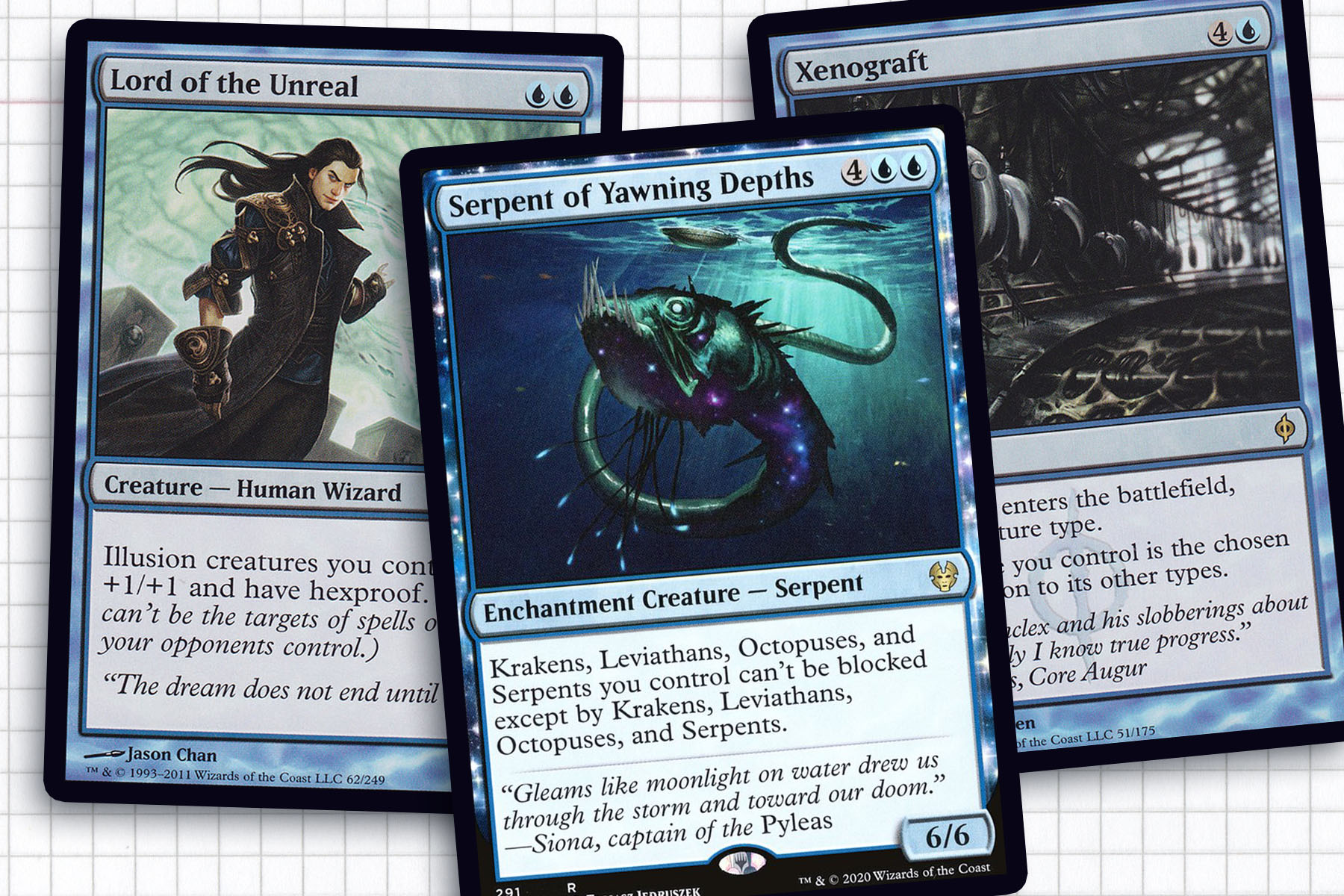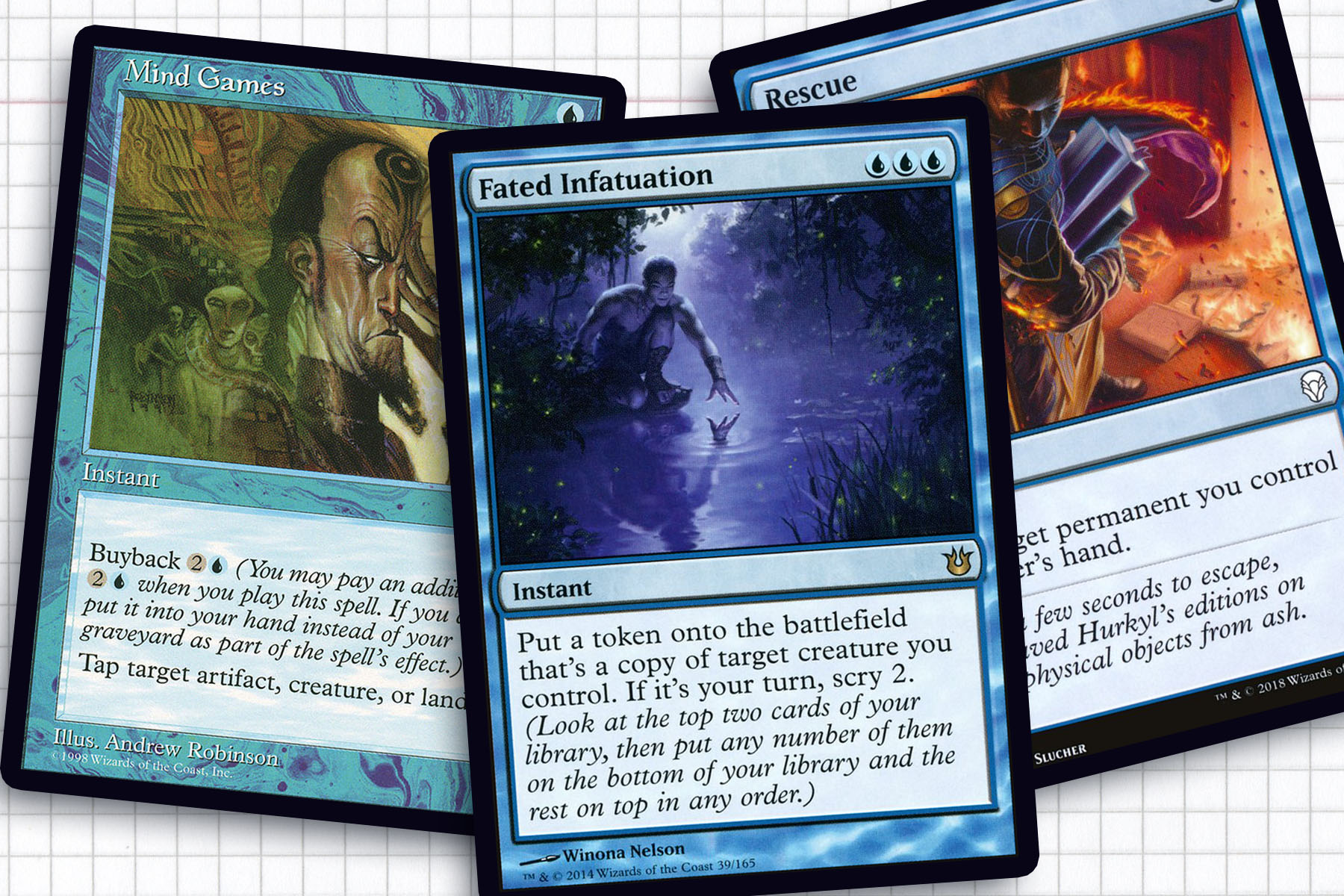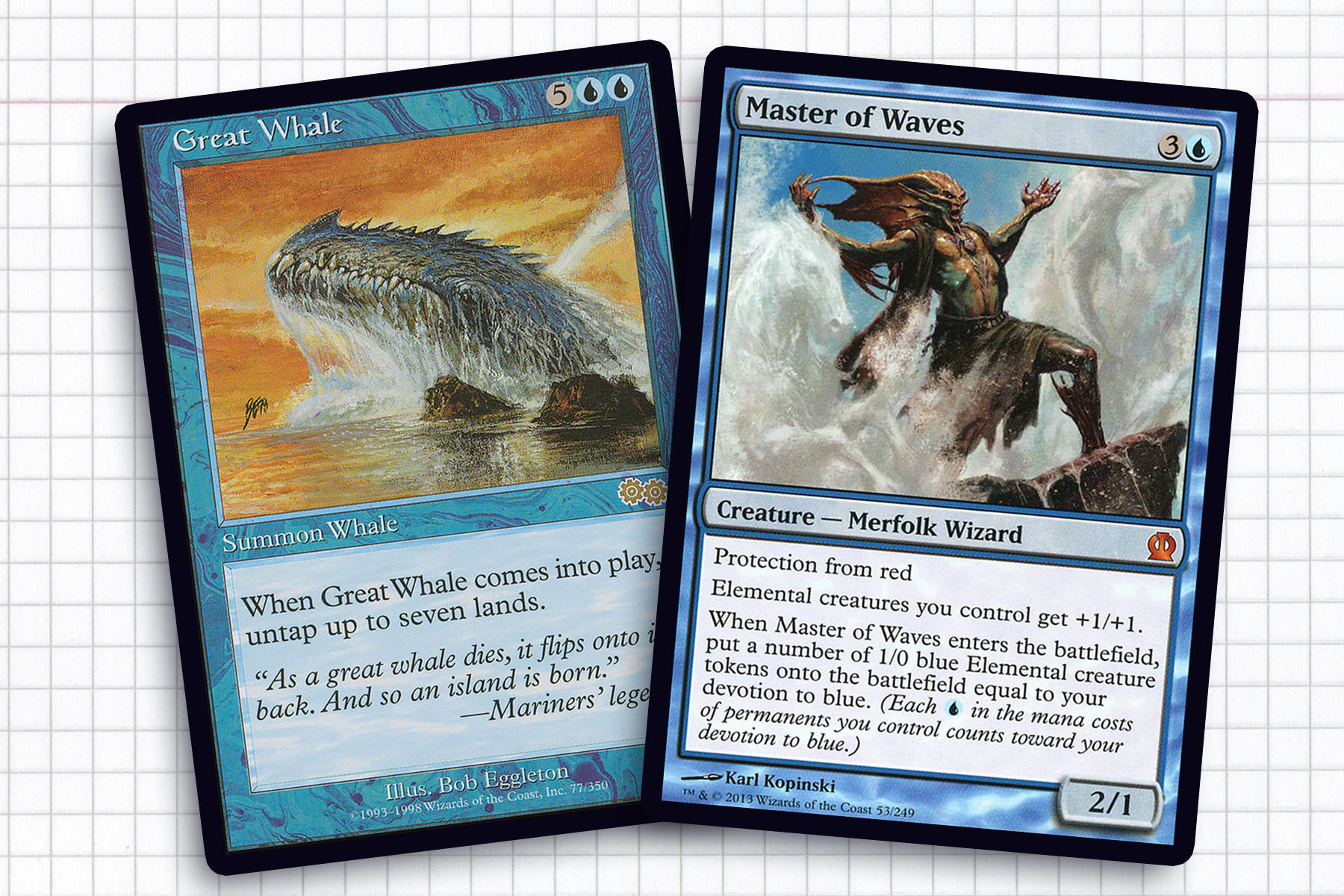When I was drawing up my plans for this week’s articles, the idea of covering Kaldheim was an eventuality that I assumed I would reach until after the set had come out and I had really taken the time to pursue the set. With the overabundance of legendary creatures that came out last year, I was afraid that I would overlook a gem like I had with Orah, Skyclave Hierophant. This disillusionment faded during the unveiling of Orvar, the All-Form. Tribal has been a theme I love to return to time and time again, this felt no different. The design seemed open-ended enough to support a unique build, while also inspiring a twist on decks I have attempted in the past.
My first inclination was to take as many lords as I could find in the blue color identity and fill the rest of the deck out with clone effects. With Mirror Gallery or Sakashima of a Thousand Faces in play, we’d even be able to assemble a team of changeling legends that could prove to be hilarious. But I soon realized that in Orvar, we have the chance for a different kind of tribal that not only builds upon what many do with Mistform Ultimus, but introduces a kind token strategy I never knew I wanted. Get your dry erase tokens ready, we’re going to be making a lot of different kinds of stuff.
Commander: Orvar, the All-Form
Creatures: Adaptive Automaton, Aethersnipe, Archaeomancer, Archipelagore, Azami, Lady of Scrolls, Callaphe, Beloved of the Sea, Cloud of Faeries, Deepchannel Mentor, Diluvian Primordial, Docent of Perfection, Drownyard Behemoth, Great Whale, Keiga, the Tide Star, Lord of the Unreal, Master of Waves, Master of the Pearl Trident, Mulldrifter, Peregrine Drake, Reef Worm, Scion of Oona, Scourge of Fleets, Seafloor Oracle, Serpent of Yawning Depths, Shadow Sliver, Shifting Sliver, Stonybrook Banneret, Watcher for Tomorrow
Instants: Banishing Knack, Boomerang, Cackling Counterpart, Cerulean Wisps, Chain of Vapor, Fated Infatuation, Ghostly Flicker, Mind Games, Mission Briefing, Pongify, Rapid Hybridization, Reality Shift, Rescue, Retraction Helix, Sudden Substitution, Teferi’s Time Twist
Sorceries: Artful Dodge, Hidden Strings, Rite of Replication, Sakashima’s Will, Stolen Identity, Void Snare
Artifacts: Ashnod’s Altar, Everflowing Chalice, Fellwar Stone, Maskwood Nexus, Sky Diamond, Skyclave Relic, Sol Ring, Stoneforge Masterwork, Strata Scythe, Wayfarer’s Bauble
Enchantments: Arcane Adaptation, Monastery Siege, Xenograft
Lands: 27 Island, Desert of the Mindful, Ghost Quarter, Guildless Commons, Lonely Sandbar, Myriad Landscape, Mystic Sanctuary, Path of Ancestry, Nykthos, Shrine to Nyx, Reliquary Tower, Remote Isle, War Room

A Lord for Every Season
Orvar, the All-Form is a strange card, all things considered. As I stated before, there was a good day and half while I was drawing up a plan for this deck, where I assumed it would be very invested in Clone effects. In the abstract, it seems like a decent plan: you do anything your opponents can do, with the advantage of possibly having multiple copies. But looking at this strategy from a different perspective and seeing Orvar as a more optimized Mistform Ultimus really unlocked the deck for me personally.
With Mistform Ultimus, I would have traditionally taken advantage of any number of lord effects, which is enough. With Orvar, we can do more. Through Orvar’s copy ability, we will be able to double or triple some of the most desirable lord effects in our deck. The most basic examples are Adaptive Automaton, Lord of the Unreal, Master of the Pearl Trident, and Scion of Oona. Each of these pump up their respective creature types and in most cases, grant a useful keyword.
Once we use permanents like Arcane Adaptation, Maskwood Nexus, and Xenograft, the real fun begins. If we can start building up our creature types, we can take advantage of cards like Azami, Lady of Scrolls, Seafloor Oracle, Serpent of Yawning Depths, and Shadow Sliver, which normally would only support our general. But once our creatures are all Faerie Wizard Merfolk in addition to their other types, our whole team transforms into something fierce.

Pick Your Targets
If there is going to be one pressure point on this deck, I think it’s going to be experimenting to find the right balance of important permanents and spells that economically target our creatures, artifacts, or enchantments. Targeting creatures is easy: Cackling Counterpart, Fated Infatuation, Rite of Replication, and Stolen Identity all result in multiple creature tokens and a far better context within this deck. This excites me, as these have all been fringe spells in the last few years, as that they often didn’t merit inclusion over even Clone, which can be reanimated and start doing its thing.
Unfortunately, non-creature permanents have not proven to be as easy to seamlessly target. This is not to say that it’s impossible; we can use spells like Ghostly Flicker, Rescue, and Void Snare to make copies of our lands, enchantments, and artifacts, if the need arises. But I’m not sure that Capsize works at a good enough rate to make copies of permanents when we’ll also have to be recasting them later. Likewise, we’re never going to cast Aether Gale or Distorting Wake targeting one of our permanents and everyone else’s stuff.
I think mastering Orvar’s copying ability is going to prove to bring depth to the deck that I just can’t account for in the hypothetical. This ability doesn’t just peak at allowing you to both reset Arcane Adaptation and have another copy waiting in your hand. It would not surprise me if the constant copying allows for a strategy to become as resilient as Pack Rat. With a simple targeted spell, a pilot can play around removal or enemy bounce effects, because a second untargeted copy of any contentious permanent would be there when the dust settles.

Multiplicity
We’ve reached the point in the game where all of our creatures are Faerie Wizard Merfolk and we have our targeting spells of choice. It’s time to turn our attention towards what we want to copy to close out games. First off, there the creatures that will hopefully disrupt our opponents: Aethersnipe, Keiga, the Tide Star, and Scourge of Fleets. Of the three, Keiga excites me the most, because I think taking creatures instead of simply returning to their owner’s hand seems like a much better long-term plan—especially since any spell aimed at Keiga will create a legendary token that can snatch something right away.
In a less disruptive space, think of Master of Waves in the context of the Pack Rat analogy: you pay some mana to discard a card and make a copy of Master of Waves. That seems amazing—sign me up! The same with Diluvian Primordial: cast Cerulean Wisps, get spells from other people’s graveyards, some of which might target your permanents. This is another part of the deck I look forward to refining, because I don’t think I’ve found all of the creatures that are going to be surprisingly good when combined into this strange concoction.
Overall, I find myself being very excited by this deck, maybe because it’s a tokens deck disguised as Voltron. The sheer fact that Orvar rewards a deck builder for finding instants and sorceries that don’t see a lot of play, simply because they may allow us to turn those spells on ourselves to protect our board. That is fascinating to me. By blending lord effects with effects that allow all our creatures to share a creature type, we’re exploring uncharted territory. In a similar vein to how my Eldrazi deck worked to exploit colorlessness, here I wanted to exploit creature types in an unconventional way.
After reflecting on this deck, what you’re looking for when you build around Orvar is small spells that do nearly pointless things in other contexts, but reward you in this deck. In many ways, it feels like Mistform Ultimus meets Blind Seer. There is something here that merits this deck existing; there is value in trying to find the fun here, and experiencing something unlike any deck before it. I predict that this is a deck that will crash and burn the first few times I pilot it, but I invite that dysfunction, because there might be something unique enough here to stand the test of time.
Ryan Sainio is a Graphic Designer who writes about EDH and the EDH community. He has been playing Magic: the Gathering since 7th Edition in 2002 and values flavorful and fun gameplay over competitively optimized decks.

